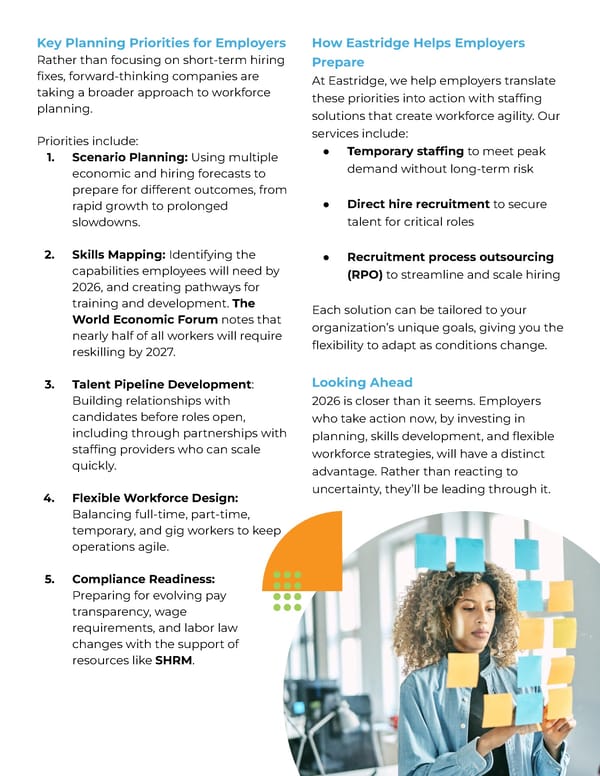Key Planning Priorities for Employers Rather than focusing on short-term hiring fixes, forward-thinking companies are taking a broader approach to workforce planning. Priorities include: 1. Scenario Planning: Using multiple economic and hiring forecasts to prepare for different outcomes, from rapid growth to prolonged slowdowns. 2. Skills Mapping: Identifying the capabilities employees will need by 2026, and creating pathways for training and development. The World Economic Forum notes that nearly half of all workers will require reskilling by 2027. 3. Talent Pipeline Development: Building relationships with candidates before roles open, including through partnerships with staffing providers who can scale quickly. 4. Flexible Workforce Design: Balancing full-time, part-time, temporary, and gig workers to keep operations agile. 5. Compliance Readiness: Preparing for evolving pay transparency, wage requirements, and labor law changes with the support of resources like SHRM. How Eastridge Helps Employers Prepare At Eastridge, we help employers translate these priorities into action with staffing solutions that create workforce agility. Our services include: ● Temporary staffing to meet peak demand without long-term risk ● Direct hire recruitment to secure talent for critical roles ● Recruitment process outsourcing (RPO) to streamline and scale hiring Each solution can be tailored to your organization’s unique goals, giving you the flexibility to adapt as conditions change. Looking Ahead 2026 is closer than it seems. Employers who take action now, by investing in planning, skills development, and flexible workforce strategies, will have a distinct advantage. Rather than reacting to uncertainty, they’ll be leading through it.
 Workforce Planning for 2026: Building Agility in an Uncertain Market Page 1
Workforce Planning for 2026: Building Agility in an Uncertain Market Page 1 